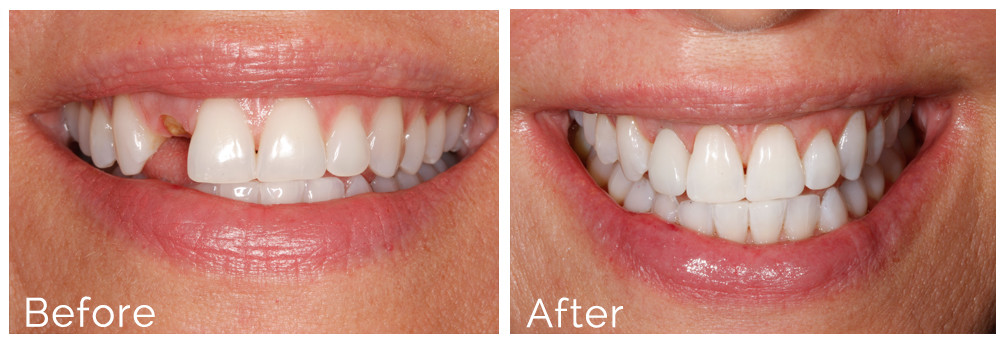The 6-Minute Rule for Dental Sense
8 Easy Facts About Dental Sense Explained
Table of ContentsThe Best Guide To Dental Sense7 Simple Techniques For Dental SenseHow Dental Sense can Save You Time, Stress, and Money.The Basic Principles Of Dental Sense
are medical tools operatively dental implanted right into the jaw to recover an individual's capacity to chew or their look. They give assistance for artificial (phony) teeth, such as crowns, bridges, or dentures. When a tooth is shed due to injury or condition, a person can experience complications such as fast bone loss, malfunctioning speech, or changes to chewing patterns that result in pain.Oral dental implant systems consist of an oral implant body and dental implant joint and might additionally consist of a joint fixation screw. Kids dental. The dental implant body is operatively placed in the jawbone instead of the tooth's root. The dental implant joint is generally connected to the dental implant body by the abutment fixation screw and prolongs through gum tissues into the mouth to sustain the affixed artificial teeth
(https://telegra.ph/Transform-Your-Smile-Dental-Implants-Root-Canal-Procedures-and-Professional-Teeth-Whitening-01-11)Framework of The Dental Implant System choosing dental implants, speak to your oral supplier concerning the potential advantages and threats, and whether you are a candidate for the treatment. Things to consider: Your total health is a vital factor in figuring out whether you are a good candidate for oral implants, just how long it will certainly take to recover, and how much time the implant may remain in area.
Smoking cigarettes may affect the healing process and reduce the long-term success of the dental implant. The healing process for the implant body may take several months or longer, throughout which time you generally have a temporary joint in place of the tooth. the dental implant procedure: Meticulously adhere to the dental hygiene directions provided to you by your oral provider.
Some Of Dental Sense
Implant failure can lead to the requirement for one more procedure to deal with or change the implant system. Recovers the capacity to eat Recovers cosmetic look Aids keep the jawbone from diminishing because of bone loss Preserves the health and wellness of the bordering bone and gum tissues Assists maintain adjacent (neighboring) teeth stable Improves lifestyle Damages to bordering all-natural teeth during implant placement Injury to the surrounding cells throughout surgical treatment, such as sinus perforation Injury during surgical procedure (for instance, crack of bordering jawbone) Poor function, such as seeming like the teeth do not attack with each other typically A sensation that the tooth hangs or twisting in place resulting from an abutment screw loosening up Implant body failure (looseness of the dental implant body) due to systemic infection, which may be most likely in clients with unrestrained diabetes mellitus due to local infection in bone and gums sustaining the implant body because of delayed recovery, which may be most likely in individuals that smoke Problem cleaning up the gum tissues around the implant, causing bad dental health Unattended gum condition Post-surgical tingling as a result of nerve impingement or damages Always inform healthcare providers and imaging technicians that you have oral implants prior to any magnetic resonance imaging (MRI) or x-ray treatments.
FDA is not conscious of any unfavorable occasions reported for MRI or x-ray procedures with dental implants. Dental implants systems are usually constructed from products that comply with international agreement standards of the International Company for Standardization (ISO) or ASTM International. These requirements have details of what makes a secure material.

A dental implant is a structure that replaces a missing tooth. With screw-like tools, the doctor inserts an implant right into the jawbone, and it serves as an anchor for a fabricated tooth, called a crown. A tool called a joint links the man-made tooth to the dental implant. The crown is tailor-made to fit the person's mouth and match the shade of their teeth.
Fascination About Dental Sense
Some individuals are not eligible for oral implant surgical procedure. It is for oral specialists to run on people with: acute illnessuncontrollable metabolic diseasebone or soft tissue condition or infectionIf these problems are dealt with, an individual can have the surgery. In, dental specialists avoid running on individuals with: If individuals with any of the above undergo oral implant surgical procedure, there is a greater risk of the dental implant falling short.

Dental dental implant surgical treatment is a personalized process. It's not the very same for everybody. Yet the following offers a general summary of what you can expect your dental professional, dental cosmetic surgeon, periodontist or prosthodontist to do: Position the dental implant operatively. Offer you time to heal. Attach the message and final crown, bridge or denture.
Next off, your doctor will very carefully put the oral implant right into your jaw. Your doctor will rearrange your periodontals and close the cut with stitches. If your implant is near the front of your mouth, your dental practitioner will certainly make a short-lived tooth for you to wear up until you heal. That way, you will not have a space in your smile while you recover.
How Dental Sense can Save You Time, Stress, and Money.
Your supplier can tell you what to expect in your situation. Throughout the recovery phase, your jawbone needs to fuse to the dental implant. This process, called osseointegration, is crucial for stability and lasting success. This process can take anywhere from 3 to 9 months. In many cases, it might take longer.
When your implant heals, your dental practitioner can affix the abutment (little port blog post) and your last repair (crown, bridge or denture). This normally takes concerning one hour to finish and may need a 2nd small surgical procedure. You shouldn't feel any type of discomfort websites during your dental implant procedure due to the fact that your service provider will certainly make use of medicine to numb your gums.